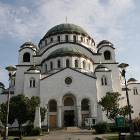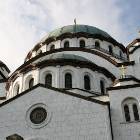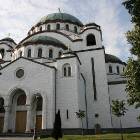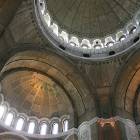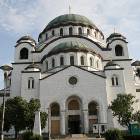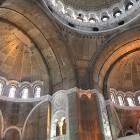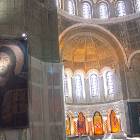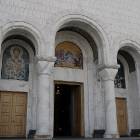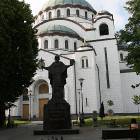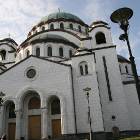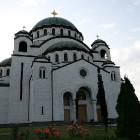The largest Orthodox church in the world: St. Sava, Belgrade
This over a hundred years old unfinished project is the expression of the dream to present Serbia as the exponent of Orthodox Christianity in central Europe, or even Serbian exceptionalism. It is no surprise that Hagia Sophia was taken as a model, as that is the archetype of Eastern Christian architecture, but also the emblem of Byzantium, as a Christian kingdom.
But this representative church of Belgrade is far from a mere copy. It took the commissioners some 40 years just to decide about the project suited for this ambitious endeavor. The plans were subsequently modernized as two world wars and some smaller wars halted its development. It is, however, entirely funded through donations, and even now works are undergoing inside. Technically it is not a cathedral, as it is not the seat of the local bishop, as is also the case with St Peter’s Basilica in Rome.
The style of St Sava cathedral is consistently Byzantine, with a large rounded dome of 70 m high. The 4.000 tons concrete dome was built on the ground and than lifted on the structural walls, in a process that took a month to complete. On top of this dome sits a 12 m golden cross. The dome is supported by pendentives, the invention first used in Hagia Sophia, and also by smaller domes that act like the flying buttresses in a Gothic cathedral, countering the outside going forces.
The church, which can be seen from all major entrances in Belgrade, is dedicated to Saint Sava, the patron of Serbia, the first patriarch and brother of the first Serbian king. A statue of Sava sits in front of the building, in the small park that surrounds it.
The church is already covered with marble and granite on the outside, and the inside floor is also a marble of fine quality. The cathedral now waits for the artists to do the decoration, which will not be in fresco, but rather a mosaic, the most durable but also expensive way of decorating a Christian Orthodox church. As tradition requires, and as was also the case in the original Hagia Sophia, an impressive image of Christ Pantocrator is expected to cover the most of the main dome.
- Home Page
start page - Architecture
landmark buildings - Sacred architecture
places of worship - Nature
landscape photography - Concert
performing artists - Christmas
Santa Claus pictures
- Jooble
jobs for photographers - Escape
an out of control blog - Merry Christmas
The best organizer of Christmas parties - Astro photo
Eclipse hunting and astrological photography

